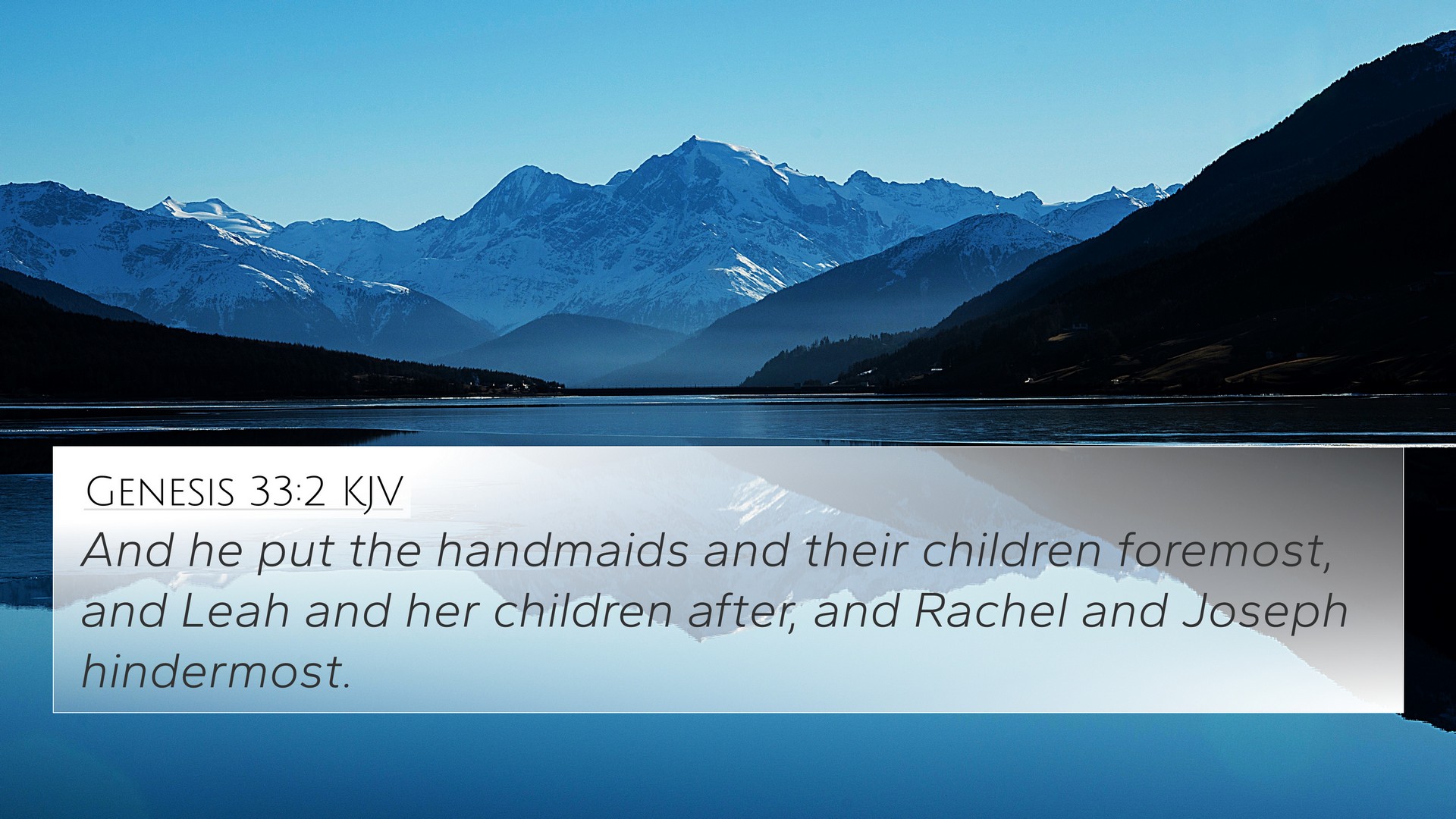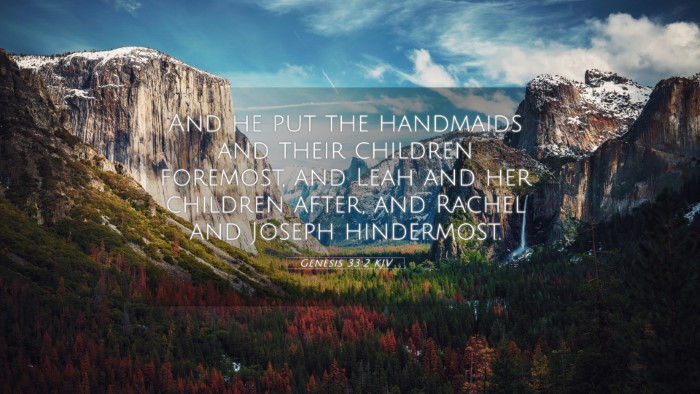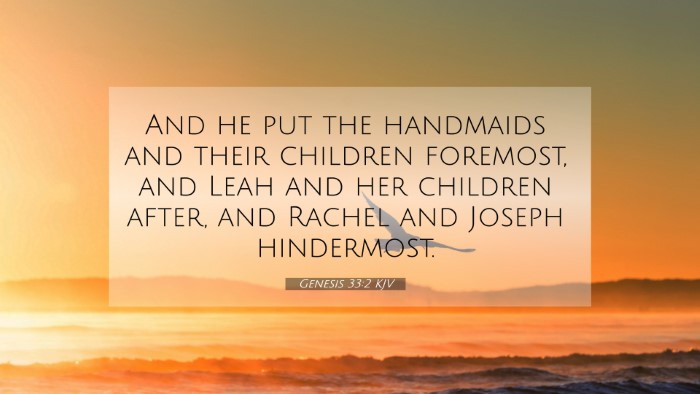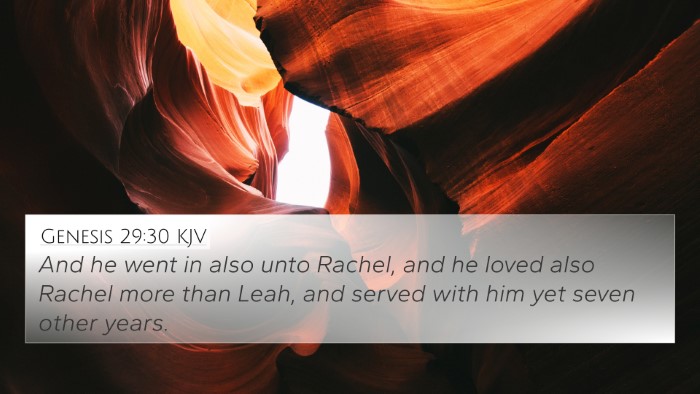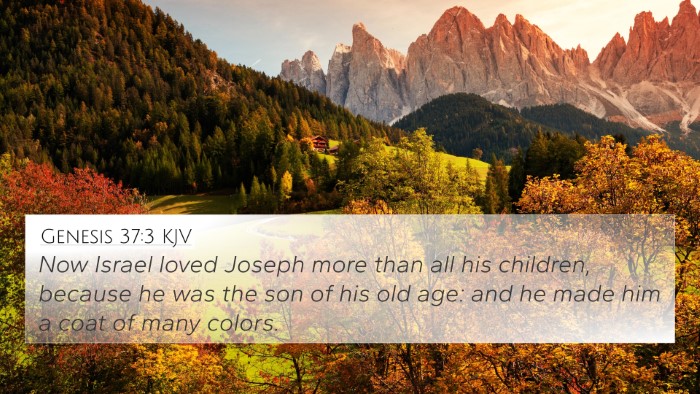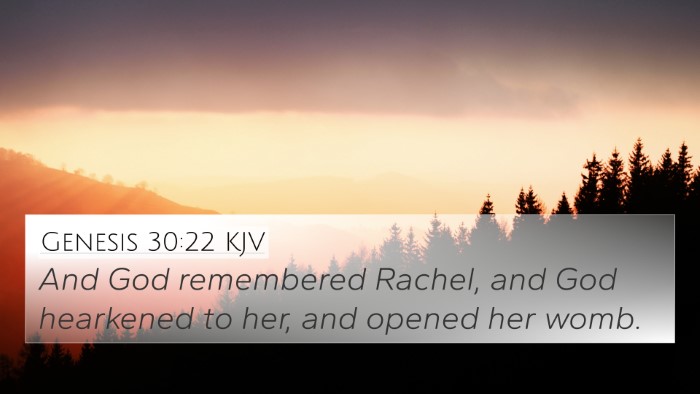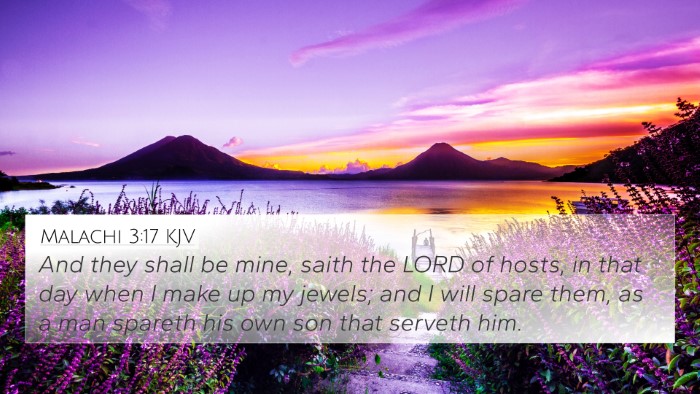Understanding Genesis 33:2
Genesis 33:2 states, "And he put the maids and their children foremost, Leah and her children after, and Rachel and Joseph hindermost." This passage features a pivotal moment in the early narrative of Jacob and Esau, ordained with significant themes of family dynamics, reconciliation, and the human emotional landscape.
Contextual Background
This verse occurs as Jacob prepares to meet his estranged brother Esau after years apart. Their previous encounter was marked by conflict and strife, leading Jacob to flee for his life. Thus, this moment embodies both tension and anticipation, characterizing the intricate familial ties within the Old Testament narratives.
Verse Analysis
This moment captures various aspects when dissecting its meaning through public domain commentaries:
- Matthew Henry's Commentary: Henry highlights how Jacob's arrangement of his family reflects a strategic and protective instinct. He prioritizes the more vulnerable members of his household, placing them in front to shield them from possible hostility from Esau.
- Adam Clarke's Commentary: Clarke emphasizes the emotional weight of the reunion, discussing how Jacob, understanding the gravity of his past offenses, ensures the safety of his favorite, Rachel, signifying not just a protective instinct but potentially a guilty conscience.
- Albert Barnes' Commentary: Barnes provides insights into the social and cultural practices of the time, interpreting Jacob’s actions as customary, exhibiting his responsibility and care as a father, while also hinting at his psychological state of fear and apprehension about the encounter.
Thematic Connections
The themes relevant to Genesis 33:2 resonate throughout the biblical text. Noteworthy is the depiction of familial relationships, which finds echo in the New Testament through themes of forgiveness and reconciliation. Below are related verses:
- Genesis 32:6: The previous anxiety Jacob feels before meeting Esau, hinting at unresolved tension.
- Genesis 27:41: Jacob's past with Esau, showcasing the seed of conflict sown many years before this reconciliation.
- Luke 15:20: The Parable of the Prodigal Son, which tells of reconciliation and forgiveness within families.
- Ephesians 4:32: Encouragement to be kind and forgive one another, a reflection on Jacob’s upcoming encounter.
- Proverbs 16:7: When a man’s ways please the Lord, He causes even his enemies to be at peace with him, paralleling Jacob's pathway to reconciliation.
- Matthew 5:23-24: Jesus teaches on the importance of reconciliation before offerings, mirroring Jacob's urgency for harmony.
- Romans 12:18: Live peaceably with all men, a theme prevalent in Jacob's strategic family arrangement.
Cross-Referencing Insights
Analyzing Genesis 33:2 with cross-references allows a comprehensive understanding of biblical reconciliation and familial relationships:
- 1 John 1:9: The assurance of forgiveness links to the theme of family healing.
- Genesis 45:4-5: Joseph reveals himself to his brothers, illustrating a similar familial reconciliation.
Practical Application
Reflecting on Genesis 33:2 within a modern context implores us to examine our own family relationships. It invites individuals to consider the emotional and social dynamics at play in reuniting with estranged family and friends. It serves as a reminder of the importance of peace and forgiveness in our lives.
Conclusion
Genesis 33:2 transcends a mere narrative moment; it symbolizes the complexities of human relationships and the divine call to restoration. Integral to a thorough understanding of scripture, discerning its thematic connections enriches our Biblically-oriented spiritual journey.
Related Resources
For those eager to delve deeper into cross-referencing, consider utilizing:
- Bible Concordance: Tools that help locate verses that correspond to themes.
- Cross-Reference Bible Study: Methods to find connections across scripture.
- Bible Reference Resources: Guides for studying the relationships between texts.
